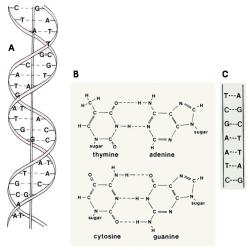Source Institutions
Source Institutions
Add to list Go to activity
Activity link broken? See if it's at the internet archive

This demonstration can be used to help learners visualize DNA by lysing (breaking open) bacterial cells on a slide and “stringing up” the DNA with a toothpick in less than one minute. This technique can also be used to study bacteria because only Gram-negative bacteria lyse in 3% KOH; Gram-positive bacteria do not. The technique is equivalent to the Gram-stain reaction, but does not require a microscope or potentially messy stains. This lesson guide includes instructions for two demonstrations, suggestions for modifications for advanced classes, study questions with answers for learners, and supplemental information and references.
- 1 to 7 days
- 5 to 10 minutes
- $10 - $20 per group of students
- Ages 11 - 18
- Activity, Demonstration, Experiment/Lab Activity, Lesson/Lesson Plan
- English
Quick Guide
Materials List (per group of students)
- plastic eggs, the hollow kind that open into two halves
- string or yarn
- chopsticks
- Culture plates of Gram-negative and Gram-positive bacterial isolates
- flat wooden toothpicks
- glass microscope slides
- dropper bottle containing 3% (w/v) potassium hydroxide (KOH)
Subjects
-
Engineering and Technology
-
Engineering
- Bioengineering/Biomedical Engineering
-
Technology
- Medical Technology
- Agriculture and Biotechnology
-
Engineering
-
Life Sciences
-
Cells
- Cell Structure and Function
-
Diversity of Life
- Viruses and Bacteria
- Classification
-
Heredity and Genetics
- DNA Structure and Function
- Genetic Engineering
-
Human Body
- Medicine
-
Cells
-
Physical Sciences
-
Chemistry
- Chemical Reactions
-
Chemistry
-
The Nature of Science
-
The Scientific Process
- Conducting Investigations
- Formulating Explanations
-
The Scientific Process
Audience
To use this activity, learners need to:
- see
Learning styles supported:
- Involves hands-on or lab activities
Other
Components that are part of this resource:
- Purpose and Background Information
- Materials and Methods
- Lesson Plan
- Supplemental Information and References
This resource is part of:
Access Rights:
- Free access
By:
- Schumann, Gail ; Jasalavich, Claudia A.
Rights:
- All rights reserved, The American Phytopathological Society, 2011
